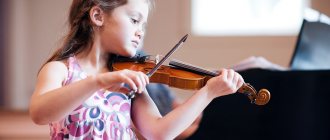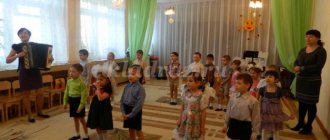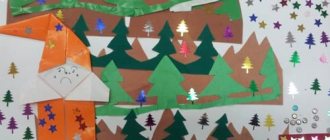Music plays an important role in the life of our society. If you take a closer look, almost every aspect of our lives is saturated with the sounds of music: theater, television, films, holidays, government events. We use players and speakers to fill our daily activities with music: jogging, traveling by car and public transport, performing everyday tasks. We use music to confess our love, use music to communicate with children and friends, express joy and sadness with music, and even tell others about ourselves.
We are not always passive listeners: who hasn’t at least once sung in the shower or with a guitar, who hasn’t tried to play something on the piano or drums? And many of us have childhood in music school and even experience of performing.
Indeed, our first encounters with music begin deep in childhood, with the first mother’s lullabies, and with age, relationships with it become more complicated, favorite and unloved music appears, music that brings back pleasant and unpleasant memories, music for different environments and moods.
Children's Montessori decided to help parents understand how the perception of music affects the development of children, and how we can contribute to this development.
Let's tune in to the topic by listening to this wonderful interview from the United Nations Children's Fund with music expert Dr. Ibrahim Baltagi:
The influence of music on the human brain
In 2021, the Institute for the Study of Brain and Creativity at the University of Southern California discovered a connection between musical education of children and the development of their brain, especially the areas responsible for the formation of oral language and reading skills.
A comparison of the brains of musicians and those who did not play music shows a number of differences in the structure and functioning of the most complex organ in the human body. For example, it has been shown that musicians cope better with memory and thinking tasks, and their hearing is more developed. Measurements of brain activity show more efficient interhemispheric communication, as well as that the areas responsible for motor skills and spatial thinking are more active in musicians.
Studies of the brains of musicians show the unique influence of music on brain development: there is literally not a single area of the brain that is not involved in music in one way or another, which, of course, has a positive effect on its functioning.
How does music affect children's development?
Research shows that freshmen who learned to play musical instruments as children do better in math and, on average, even do better when applying to college.
Music classes develop children's intelligence, influence communicative and emotional development, improve coordination and fine motor skills, and develop speech. Overall, music teaches the body and mind to work together. In early childhood, the sounds of music stimulate the baby’s hearing and prepare him for the appearance of speech; later, dancing is introduced, thanks to which children actively develop dexterity and coordination. Even babies respond vividly to music: they smile and begin to move their arms and legs.
In addition, music creates a mood for both adults and children. It allows you to get into a working mood or, conversely, relax and unwind. Cheerful morning melodies allow you to wake up quickly, and calm evening melodies help you fall asleep quickly. What place does music occupy in the lives of children of different ages?
Babies and music
As we remember, babies are sensitive to sequences from birth. Regular events bring order to their perception of the world and allow them to understand how everything works here. In addition, the first year of life is a year of active development of all senses, so it is not surprising that babies enjoy light musical rhythms. At this age, music can become a mother’s assistant in creating a daily routine: turn on different melodies when waking up, bathing, feeding and going to bed. Watch the volume, because children's delicate ears are not ready for loud and rude music; give preference to calm, quiet melodies.
From one to three years
At this age, kids love to dance. Repeated lines of children's songs, although they often drive parents crazy, for children they become the key to the development of memory and speech. At this age, getting to know different rhythms and repeating them in all sorts of ways can be incredibly beneficial activities. Older kids enjoy changing the words in familiar songs, and you can easily play along with them by creating new puns from their favorite songs: “Once upon a time there was a little gray monster at grandma’s house.”
Preschoolers
Preschoolers dance and sing with pleasure. They are not yet shy and do not evaluate how well or poorly they do this or that song. They still love songs with repeating lines and tunes. Kids are great at joining improvised orchestras, in which you can use all kinds of rattles, spoons, bells and other simple instruments to play along with the main melody. At this age, musical preferences already appear; children may show interest in music education.
Schoolchildren and teenagers
Younger schoolchildren enjoy listening to educational songs that reveal the meaning of new words and phenomena. They begin to more consciously choose music to suit their environment and mood, and musical preferences continue to form. Music and vocal classes give children the opportunity to express themselves and also help strengthen the child’s self-esteem. By the end of elementary school, music is already beginning to play a social role: teenagers form groups based on genre preferences, spend time in the company of friends listening to their favorite music, and try themselves as musicians and performers. Teenagers’ social networks are also filled with music, and musical idols in many ways become role models.
Music accompanies a person from birth to old age, especially influencing the formation of personality and the development of cognitive and social functions in childhood. In developmental music classes, children begin their acquaintance with music with simple rhythms and simple children's songs. A child’s interaction with music has a positive effect on the development of the child’s speech and thinking, improves creativity, develops his emotional sphere and improves his relationships with peers.
Music in the family
Reading about how music affects children, you may have imagined special classes with teachers in music schools and children's development centers, however, if parents have enough time and desire, the child’s communication with music can be organized at home. In addition to all the above-described advantages of this approach, you will also have a bonus in the form of family unity, as well as wonderful time spent with your loved ones.
To practice music together, you don’t need to be a professional musician or vocalist, just a friendly and slightly hooligan attitude is enough. Sometimes you don’t even need to set aside special time for activities, connecting them with everyday tasks. We have prepared a small list of ideas for musical moments at home:
- Come up with (or find) and learn a short song for everyday activities: eating, brushing your teeth, going to bed. You can start humming it so that the baby gets ready for the fact that it’s time to go to bed or, for example, remembers to wash his hands after a walk.
- Songs in the genre “What I see is what I sing” is a game that perfectly develops a child’s speech and hearing. Use simple melodies and simply chant what you are doing now: “We are building a house, a tall house, a tall house and a strong house! We put a red block on the roof, and we sing a song.” As he gets a little older, your baby will begin to connect to your songs, come up with funny rhymes and use his favorite familiar melodies in his own way. Is it worth mentioning how such an activity affects the development of speech, speed of thinking and creative abilities of the baby?
- While getting ready for the garden, cooking and doing housework, you can turn on energetic music and come up with various dances to it. You can create a dance for loading laundry into a washing machine, washing apples, or a dance for lathering your hair.
- Playing rhythms does not require mastery of complex musical instruments - you can tap out melodies on spoons or other kitchen utensils, or purchase a children's xylophone or unusual percussion instruments: glucophone, kalimba, maracas, tambourine, etc. Come up with a simple rhythm and ask the baby to repeat it using the same instrument, repeat the rhythm invented by the baby. There are an incredible variety of rules for this game.
Family music traditions are a great way to introduce your child to music and share favorite compositions. Singing together brings the family together, helps structure the daily routine, has a beneficial effect on the development of the child’s speech and thinking, and also sets a positive mood for the whole family.
Summary of a music lesson for the senior preparatory group of a preschool educational institution using ICT
Musical lesson in the senior or preparatory group of a kindergarten on the topic “Music and our health”
Author: Irina Aleksandrovna Zakharova, music director of the branch of MDOU DS No. 1 DS No. 3, Belinsky, Penza region. Description of work. The summary will be useful to kindergarten music directors, educators, and music teachers in elementary schools. Here is shown an option for presenting to children an idea of how music can influence human health (according to the age characteristics of children). There are problematic situations, various forms of work, an example of “good” and “bad” music, fairy-tale characters are used - Basilio the Cat and Alice the Fox. The lesson was shown at the “Teacher of the Year” competition in 2016 with children of different age groups (senior, preparatory). Photos and videos (amateur) are presented. A film for the lesson (minutes and seconds are indicated in the notes), I found it more convenient to use than a presentation. I hope my experience will be useful. Goal: formation of musical taste, ideas about how music affects human health. Tasks: to emotionally perceive music of a different nature and speak out about it;
develop the ability to convey the character of music with the help of plastic movements and artistic creativity; develop creative thinking and imagination, cognitive activity, vocal-choral, communication skills. Progress of the lesson.
1.Login. To the music, the children run like a snake into the hall. (entrance song “Path-toropinka” (00:03) Musical director: Guys, I’m very glad that the cheerful path led you to the music hall. Sit down at your convenience. (A fragment of the introduction of P.I. Tchaikovsky’s “Waltz of the Flowers” sounds ( 01:06) Musical director: Guys, what are you hearing now? (music) - Why do you think a person needs music? (answers) - Today we will talk not only about music. But what, you will find out by guessing riddle. We have all known for a long time Cow's milk Helps strengthen Children's ...... (health) - Do you think music can somehow influence human health? - Today we will listen and perform different music, and I think we will find the answer to the question does music affect our health, and if so, how does it do it? Now let's admire the landscapes, listen to the music and think about what feelings it conveys. 2. Tchaikovsky's "Waltz of the Flowers" - listening (fragment (01:32) Musical director : What mood does this music convey? - What is the name of this music, how many of you know? - Who wrote this music? -Who could dance to this music?
Musical director: Yes. This work was written by the famous Russian composer P.I. Tchaikovsky and called it “Waltz of the Flowers”. To this music, fairy-tale characters spin in a magical dance - a prince and princess surrounded by beautiful flowers. Let's imagine that we find ourselves in a fairy tale, turned into beautiful flowers and dancing along with everyone. Anyone who wants can decorate themselves with flowers. (children wear wreaths and ties with flowers) - Try to come up with movements that match the music yourself. On the clap we change the movement. 3. Plastic improvisation to the music of P.I. Tchaikovsky “Waltz of the Flowers” (03:11)
Musical director: Well done, you danced very beautifully. What effect do you think this music can have on human health? (it can improve health) - Why do you think so? (she brings goodness, joy and happiness, she makes your soul feel good. We also danced, but dancing is useful) - Why do you think that dancing is useful? (strengthens posture, develops muscles) - Yes, this music gives us happiness and health, let us, with the help of music, wish everyone health and say with a song - Good afternoon! 4. Logorhythmic (communicative) game - singing “Hello!” Hello, blue sky! (raise hands) Hello, golden sun! (close their hands on top in a semicircle) Hello, free breeze! (wave at themselves) Hello, little oak tree! (wave in front of them) We live in the same region. (pulled forward) I greet you all! (raise hands up)
5. “Good afternoon” lyrics. V. Suslova, music. Y.Dubravina - performance (04:50)
Musical director: Do you think this song can help us in some situation? (if you’re sad, she can cheer you up) - Why? (because the nature of the music is cheerful and joyful) - How can this song affect our health? - Why can it improve health (it gives joy, good mood, singing strengthens the lungs, develops breathing, improves the flow of blood) - Yes, if you sing correctly, it is good for health. What rules of proper singing do you know? (do not shout, breathe correctly, pronounce words clearly) - Well done, you said everything correctly. Now imagine that you find yourself in a forest clearing, sit down to rest, close your eyes and hear music.
6. Listening to Mariage d'Amour - Paul de Senneville - Spanish Richard Clayderman. (excerpt) (06:21) Musical director: The music ended and you opened your eyes. Now go to the easel and use colored crayons to convey the mood of the music on paper. Free visual activity. (with music) (07:20)
Musical director: Why did you choose these colors? (the music is light, gentle and calm, so the colors are light, gentle - yellow, pink, blue) - Well done. You did everything right, and I would like to give you a gift. There was a music box here... Where is she? Have you guys seen it? (Music((08:51) Basilio the Cat and Alice the Fox come in. They quarrel and push)
Cat: Give it back, I saw it first! Lisa: But I took it first! Cat: Give it back, I'll try to open it again. There could be gold or jewelry there! Lisa: I won’t give it, I won’t give it. You still don't have the key. Cat: here it is, here it is. Musical director: Oh, guys, it looks like we have guests. Hello, dear ones, you are in kindergarten. So, don't quarrel or swear, please. Lisa: Oh, kids! Cat: But she won’t give me the box. I saw her first! Lisa: I like her myself. True, there is no key to it. Well, that’s okay, I’ll try with my key (picks in the lock, loud, unpleasant music sounds (09:13) the cat and the fox get scared )
Musical director: (takes out the key, the music stops sounding) Yes, this is my chest. I prepared it to give the guys a surprise, but you took it without permission and look what you did. And this is not how music should sound at all! Guys, what can you say about the music you just heard? (it is rude, harsh, unpleasant, very loud) - What can you do to this music? (quarrel, fight, make faces) - Let's use crayons to depict the impressions of this music. Free visual activity The Fox and the Cat hang around the children. Fox: Take the yellow one Cat: Blue is better Musical director: Guys, tell the Cat and the Fox why you chose these colors? (she is unpleasant, scary, that’s why the colors are dark) - This box is a gift for the guys. And only a special key can open it correctly. Guys, what key can open the music box (I show three keys. Children choose the violin key, I open the box) - Look, guys, what’s here? (musical instruments)
Lisa: You guys will forgive us and take us to play with you. Cat: We won’t take anything without permission. Together: We promise. Musical director: Well, if you promise, the guys and I will forgive you. Take musical instruments. Let's see what kind of music this magic box will bring. The music will tell you a fairy tale, look at the screen and be careful.
7. Playing music on children's musical instruments “Good Master” (10:03) Musical director: What mood did the music convey? (children's answers) - How can it affect our health? (strengthen because it brings joy and fun) Fox and Cat: Thank you. Now we understand what music is useful and should be listened to. Now it's time for us to go. Goodbye, children. (leave, music (12:44) Musical director: Today we listened to different music. Look at your drawings. What kind of music do you want to listen to, the one you depicted in light, bright colors or the one you depicted in dark colors? Why? - What kind of music is useful for health? (one that is pleasant to listen to, that brings joy, bright, calm) - Well done guys. I was very pleased to communicate with you today. (music sounds, then quieter, then louder) 8. Exit. Musical director: Listen, guys , a cheerful path invites you to join the group, and a pleasant surprise awaits you there (the children run out of the hall like a snake)
Amateur video lessons. Video presentation for the lesson. I found it more convenient to use than just a presentation.
We recommend watching:
Summary of educational activities for the senior group on the topic: Autumn Summary of educational activities in the senior group “Journey to the magical world of musical instruments” Summary of educational activities in the senior group “Visiting Domisolka” Thematic music lesson in a preschool educational institution. Senior group
Similar articles:
Conversation in the senior group of kindergarten on the topic: How people use leather and wood
Lesson notes for the senior group of kindergarten
Synopsis of a musical educational lesson in kindergarten in the senior group. Music is the treasure of heaven
Summary of a music lesson in kindergarten in the senior group for Bird Arrival Day - March 22
Summary of a music lesson in kindergarten for older children on the topic “Peace through sports”
conclusions
Music is an integral part of our culture. It accompanies a person throughout his life, allowing him to go through difficult moments and share joy with loved ones, find friends with similar interests and get into a working mood. Music has a positive effect on children, developing their speech and thinking, influencing the development of their creative abilities and the ability for emotional self-regulation. That is why all teachers recommend actively including music lessons and simply listening to music in a child’s life. In addition, joint family music lessons help improve relationships between household members and improve the mood of all family members.
Middle group. Junior preschool age. Children 4 - 5 years old
Photo report on the lesson in the middle group “Journey to a Musical Country”
November 19 in the group “Kapitoshki”
A “Round Table”
was opened for parents , where
the music director and teachers showed the musical lesson “Journey to
a Musical Land ” .
The goal was to develop the creative abilities of children on the basis of musical and playful creativity...
Game situation in the music lesson “Visiting the Bunny” for children 4–5 years old Game situation in the music lesson “Visiting the Bunny”
for children 4-5 years old. Goal: To teach children to distinguish between high and low sounds. Improve children's auditory perception. Create a positive emotional mood, a desire to help the Bunny, and evoke a feeling of empathy. Progress:...




